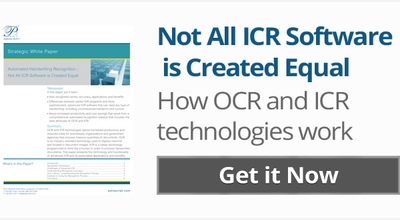There is often a need to read different data from checks, such as amounts, dates, signatures and so on. It may seem that the most logical approach is to rely on the OCR capability that comes with check scanners.
Unfortunately, check scanners OCR offers very basic capabilities and its often not the solution. Reading fields on checks is a much more complicated task. Here are just a few of the challenges: the quality of check images is significantly worse than the text that can be read by OCRs; checks are semi-structured documents (i.e. there is no defined position for target fields on a check); all personal checks and some business checks include handwriting.
Therefore, more advanced recognition technology is required to read data from checks. There are systems specifically targeted to reading data from checks. They use innovative technology, which can recognize information in constrained and unconstrained hand print, machine print and cursive. This specialized software also solves one of the most difficult problems in recognition – identifying the location of target data, for example amount fields, dates, signatures, etc. While other technologies are able to locate amount fields only on documents of a predetermined format, advanced solutions solve the problem using universal algorithms that allow the software to identify field location on any check, independent of the type and format.
Signature verification is another problem regular OCR cannot solve. Specialized software not only locates a signature or multiple signatures on a document, but it compares a signature found on personal or business check or defined as a custom field against a reference signature prototype image(s) and makes a conclusion about the genuineness of the input signature.
Learn more about OCR and ICR in the white paper: Not All ICR Software is Created Equal.




